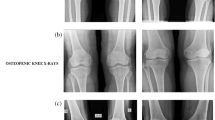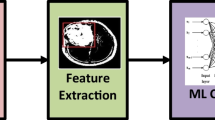Abstract
Bone Cancer is a fatal disease caused by uncontrolled cell development. Following extensive research, about 100 different types of cancer have been discovered in the human body. Bone cancer is one of the most widely distributed of them, and it is fatal. The diagnosis of bone cancer is critical and has a low prognosis. For the process of medical picture analysis, some of the work is presently undertaken using data mining tools and image processing technology. Despite ongoing advancements in cancer research, it continues to be one of the world’s most lethal diseases. It is critical to pool all resources in order to achieve a breakthrough in cancer treatment. Early detection would go a long way toward lengthening the patient’s life and lowering the death rate. As a result, it is critical to develop approaches that are both inventive and efficient, as well as having fewer negative consequences. This research examines all aspects of bone cancer and its characteristics in order to determine its type. One of the most prominent methods for dividing up the Bone picture into distinct portions is the Active Contour Method. The study uses a Deep Learning-based Active Contour Method with bagging and boosting algorithms to achieve this goal. It is thought to be extremely difficult to extract critical information about the organ’s shapes and volumes from a photograph. However, advances in machine learning, particularly deep learning, have made it possible to segment images and classify sick regions more effectively. It entails a number of stages, including noise removal, segmentation, feature extraction, and selection. Pixels from the object’s edges are segmented. They are then processed to achieve the desired result. Finally, active cancer approaches were used to classify the MRI pictures, and the results were extremely accurate. To evaluate the success of the recommended strategy, we used three criteria: accuracy, specificity, and sensitivity. In terms of accuracy, specificity, and sensitivity, experiments show that the proposed system beats existing methods.






Similar content being viewed by others
Data availability
All the data is collected from the simulation reports of the software and tools used by the authors. Authors are working on implementing the same using real world data with appropriate permissions.
References
Anand D, Arulselvi G, Balaji GN (2022) An assessment on bone cancer detection using various techniques in image processing. In applications of computational methods in manufacturing and product design (pp. 523–529). Springer, Singapore, An Assessment on Bone Cancer Detection Using Various Techniques in Image Processing.
Apiparakoon T, Rakratchatakul N, Chantadisai M, Vutrapongwatana U, Kingpetch K, Sirisalipoch S, Chuangsuwanich E (2020) MaligNet: Semisupervised learning for bone lesion instance segmentation using bone scintigraphy. IEEE Access 8:27047–27066
Arenas-Herrera JE, Ko IK, Atala A, Yoo JJ (2013) Decellularization for whole organ bioengineering. Biomed Mater 8(1):014106
Bagaria R, Wadhwani S, Wadhwani AK (2021) A wavelet transform and neural network based Segmentation & Classification System for bone fracture detection. Optik 236:166687
Burns JE, Yao J, Summers RM (2017) Vertebral body compression fractures and bone density: automated detection and classification on CT images. Radiology 284(3):788–797
Chen K, Franko K, Sang R (2021) Structured model pruning of convolutional networks on tensor processing units. arXiv preprint arXiv:2107.04191
Chung SW, Han SS, Lee JW, Oh KS, Kim NR, Yoon JP, Kim Y (2018) Automated detection and classification of the proximal humerus fracture by using deep learning algorithm. Acta Orthop 89(4):468–473
CopernicaWhels R, Monisha S, Pavithra P, Srinithi J, Aruna B (2021) Lymphatic cancer detection using machine learning. Ann Romanian Soc Cell Biol:17197–17202
Dadgar H, Norouzbeigi N, Jokar N, Zareizadeh J, Gholamrezanezhad A, Ahmadzadehfar H, Abbaszadeh M, Assadi M (2022) Comparison of 18F-NaF imaging, 99mTc-MDP scintigraphy, and 18F-FDG for detecting bone metastases. World J Nuclear Med 21(01):001–008
de Leiris N, Leenhardt J, Boussat B, Montemagno C, Seiller A, Phan Sy O, … Djaileb L (2020) Does whole-body bone SPECT/CT provide additional diagnostic information over [18F]-FCH PET/CT for the detection of bone metastases in the setting of prostate cancer biochemical recurrence? Cancer Imaging 20(1):1–11
Ghaderzadeh M, Asadi F, Hosseini A, Bashash D, Abolghasemi H, Roshanpour A (2021) Machine learning in detection and classification of leukemia using smear blood images: a systematic review. Sci Program 2021:1–14
Gray K, Waytz A, Young L (2012) The moral dyad: a fundamental template unifying moral judgment. Psychol Inq 23(2):206–215
Han S, Oh JS, Lee JJ (2022) Diagnostic performance of deep learning models for detecting bone metastasis on whole-body bone scan in prostate cancer
Hinzpeter R, Baumann L, Guggenberger R, Huellner M, Alkadhi H, Baessler B (2022) Radiomics for detecting prostate cancer bone metastases invisible in CT: a proof-of-concept study. Eur Radiol 32(3):1823–1832
Kouketsu A, Miyashita H, Kojima I, Sakamoto M, Murata T, Mori S, Takahashi T (2021) Comparison of different diagnostic imaging techniques for the detection of bone invasion in oral cancers. Oral Oncol 120:105453
Krois J, Ekert T, Meinhold L, Golla T, Kharbot B, Wittemeier A, Schwendicke F (2019) Deep learning for the radiographic detection of periodontal bone loss. Sci Rep 9(1):1–6
Kumar D, Jain N, Khurana A, Mittal S, Satapathy SC, Senkerik R, Hemanth JD (2020) Automatic detection of white blood cancer from bone marrow microscopic images using convolutional neural networks. IEEE Access 8:142521–142531
Kumaraswamy N (2013) Academic stress, anxiety and depression among college students: a brief review. Int Rev Soc Sci Hum 5(1):135–143
Kumaresan T, Palanisamy C (2014) Image spam detection using color features and K-nearest neighbor classification. Int J Comput Inform Syst Control Eng 8(10):1746–1749
Kumaresan T, Palanisamy C (2015) Image spam detection using texture analysis and support vector machine. Int J Appl Eng Res 10(20):15643–15648
Masoudi S, Mehralivand S, Harmon SA, Lay N, Lindenberg L, Mena E, Turkbey B (2021) Deep learning based staging of bone lesions from computed tomography scans. IEEE Access 9:87531–87542
Raciborska A, Bilska K, Koziński T, Rodriguez-Galindo C (2022) Subsequent malignant neoplasm of bone in children and adolescent—possibility of multimodal treatment. Curr Oncol 29(2):1001–1007
Rahimi HR, Mohammadpour AH, Dastani M, Jaafari MR, Abnous K, Mobarhan MG, Oskuee RK (2016) The effect of nano-curcumin on HbA1c, fasting blood glucose, and lipid profile in diabetic subjects: a randomized clinical trial. Avicenna journal of phytomedicine 6(5):567–577
Rajakumar K, Muttan S (2013) MRI image retrieval using wavelet with Mahalanobis distance measurement. J Electric Eng Technol 8(5):1188–1193
Ramírez F, Ryan DP, Grüning B, Bhardwaj V, Kilpert F, Richter AS, Heyne S, Dündar F, Manke T (2016) deepTools2: a next generation web server for deep-sequencing data analysis. Nucleic Acids Res 44(W1):W160–W165
Ranjitha P, Duth S (2021) Detection of blood cancer-leukemia using k-means algorithm. In 2021 5th International Conference on Intelligent Computing and Control Systems (ICICCS) 838–842. IEEE
Saba T (2020) Recent advancement in cancer detection using machine learning: systematic survey of decades, comparisons and challenges. J Infect Public Health 13(9):1274–1289
Saravanakumar S (2020) Certain analysis of authentic user behavioral and opinion pattern mining using classification techniques. Solid State Technol 63(6):225–233
Saravanakumar S, Saravanan T (2022) An effective convolutional neural network-based stacked long short-term memory approach for automated Alzheimer’s disease prediction. J Intell Fuzzy Syst 43(4):4501–4516
Saravanakumar S, Thangaraj P (2018) An optimized PSO using voxel based morphometry approach for identifying alzheimer from MRI images. J Adv Res Dyn Control Syst 10(04)
Saravanakumar S, Thangaraj P (2018) Hybrid optimized PSO using greedy search for identifying Alzheimer from MRI images. Int J Pure Appl Math 119(15):2391–2403
Saravanakumar S, Thangaraj P (2019) A computer aided diagnosis system for identifying Alzheimer’s from MRI scan using improved Adaboost. J Med Syst 43:76
Sharif MHU (2021) Cancer detection by machine learning. International Journal of Computer Science and Information Security (IJCSIS) 19(2)
Shimizu A, Wakabayashi H, Kanamori T, Saito A, Nishikawa K, Daisaki H, Kawabe J (2020) Automated measurement of bone scan index from a whole-body bone scintigram. Int J Comput Assist Radiol Surg 15(3):389–400
Shrivastava D, Sanyal S, Maji AK, Kandar D (2020) Bone cancer detection using machine learning techniques. In: In smart healthcare for disease diagnosis and prevention 175–183. Press, Academic
Stalin Alex D, Subramanian P, Subashini S, Kumaresan T, Stalin B, (2019) Counterfeit currency detection based on fluorescence in HSV ColorSpace. Int J Recent Technol Eng 8(1S2), 15-18
Thanh DN, Prasath VB, Hieu LM, Hien NN (2020) Melanoma skin cancer detection method based on adaptive principal curvature, colour normalisation and feature extraction with the ABCD rule. J Digit Imaging 33(3):574–585
Yan YJ, Wang BW, Yang CM, Wu CY, &Ou-Yang, M. (2021) Autofluorescence detection method for dental plaque Bacteria detection and classification: example of Porphyromonasgingivalis, Aggregatibacteractinomycetemcomitans, and Streptococcus mutans. Dentistry Journal 9(7):74
Yang S, Tan J, Chen B (2022) Robust spike-based continual meta-learning improved by restricted minimum error entropy criterion. Entropy 24(4):455
Yang S, Gao T, Wang J, Deng B, Azghadi MR, Lei T, Linares-Barranco B (2022) SAM: a unified self-adaptive multicompartmental spiking neuron model for learning with working Memory Frontiers in Neuroscience, 16
Author information
Authors and Affiliations
Corresponding author
Ethics declarations
Conflict of interest
The authors declare that we have no conflict of interest.
Additional information
Publisher’s note
Springer Nature remains neutral with regard to jurisdictional claims in published maps and institutional affiliations.
Rights and permissions
Springer Nature or its licensor (e.g. a society or other partner) holds exclusive rights to this article under a publishing agreement with the author(s) or other rightsholder(s); author self-archiving of the accepted manuscript version of this article is solely governed by the terms of such publishing agreement and applicable law.
About this article
Cite this article
Lingappa, E., Parvathy, L.R. Deep learning-based active contour technique with bagging and boosting algorithms hybrid approach for detecting bone Cancer from Mri scan images. Multimed Tools Appl 82, 36363–36377 (2023). https://doi.org/10.1007/s11042-023-14811-5
Received:
Revised:
Accepted:
Published:
Issue Date:
DOI: https://doi.org/10.1007/s11042-023-14811-5




